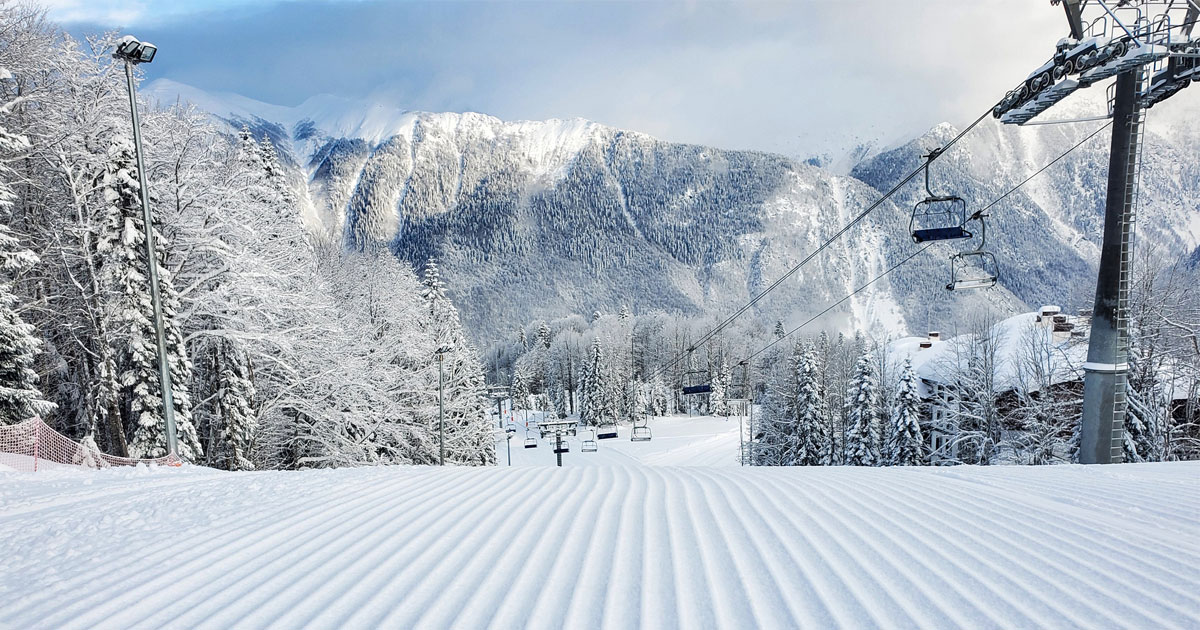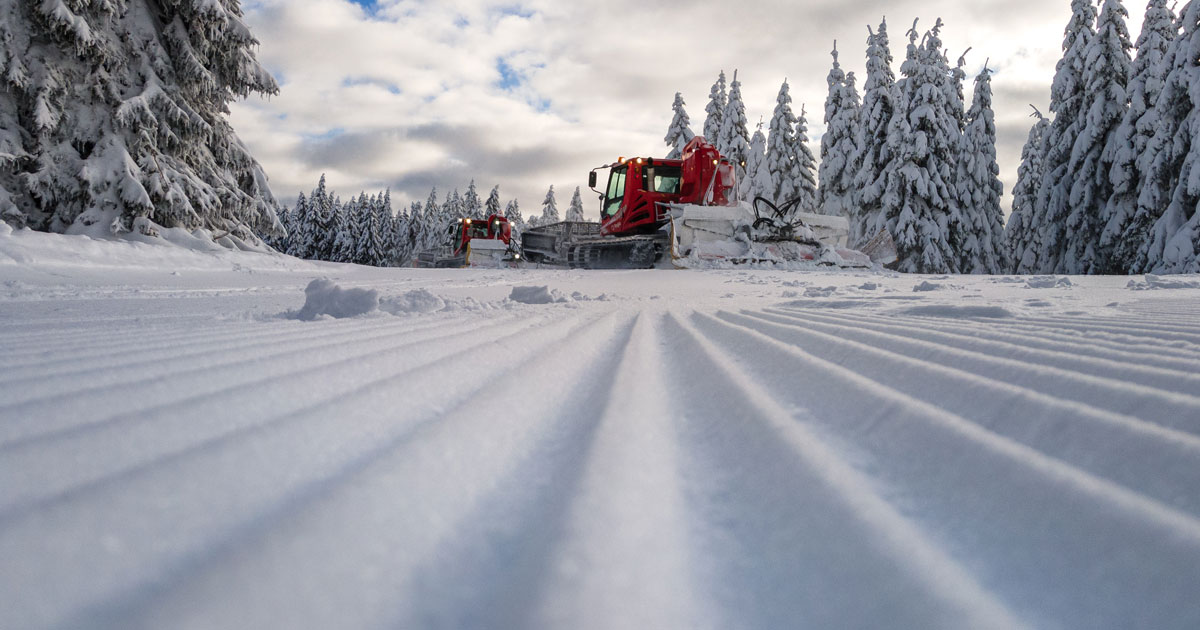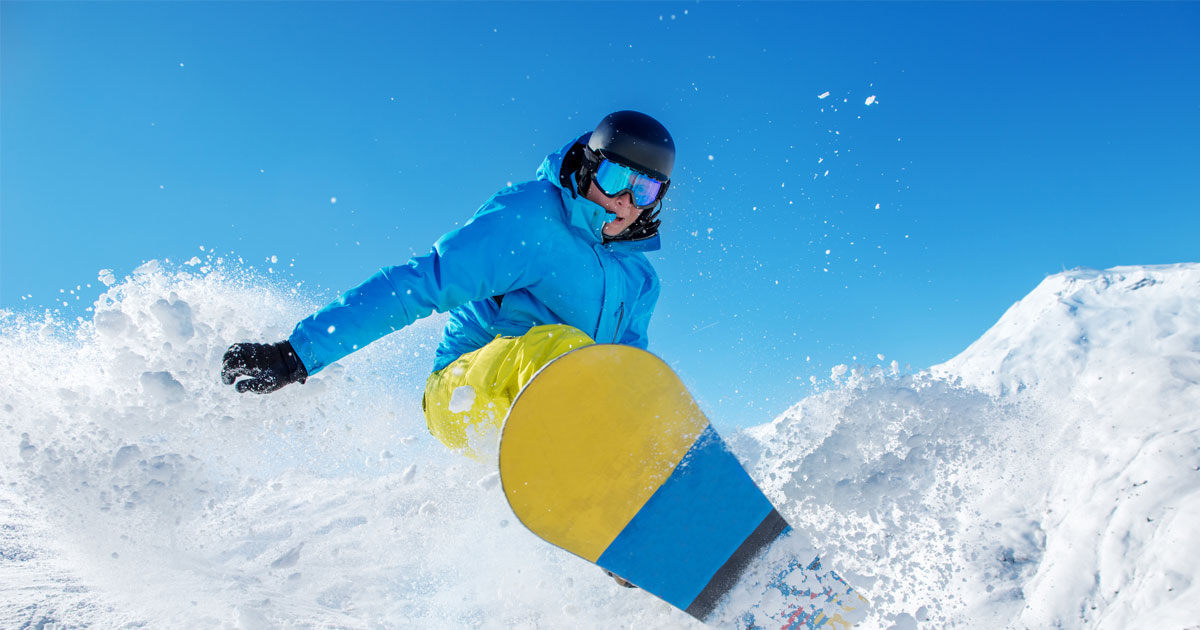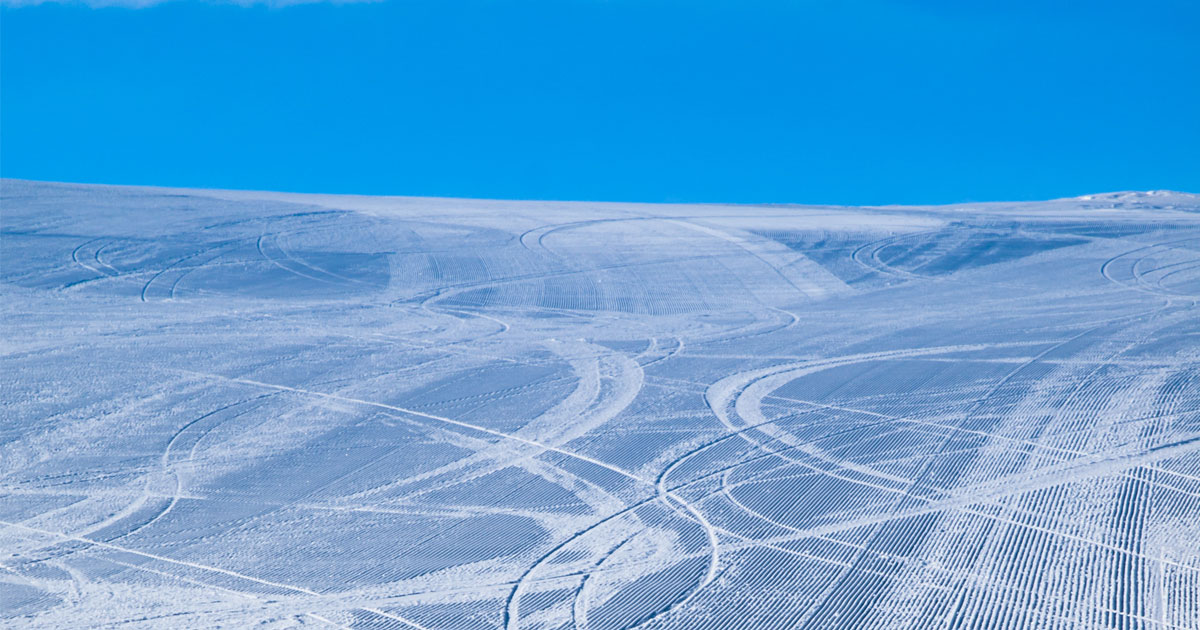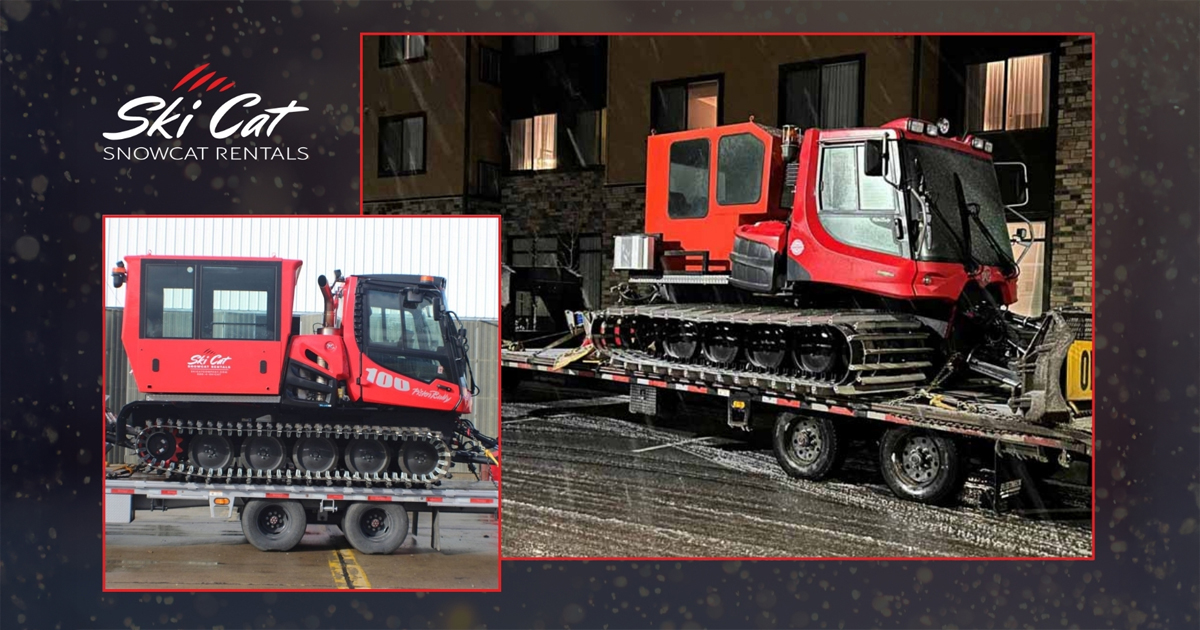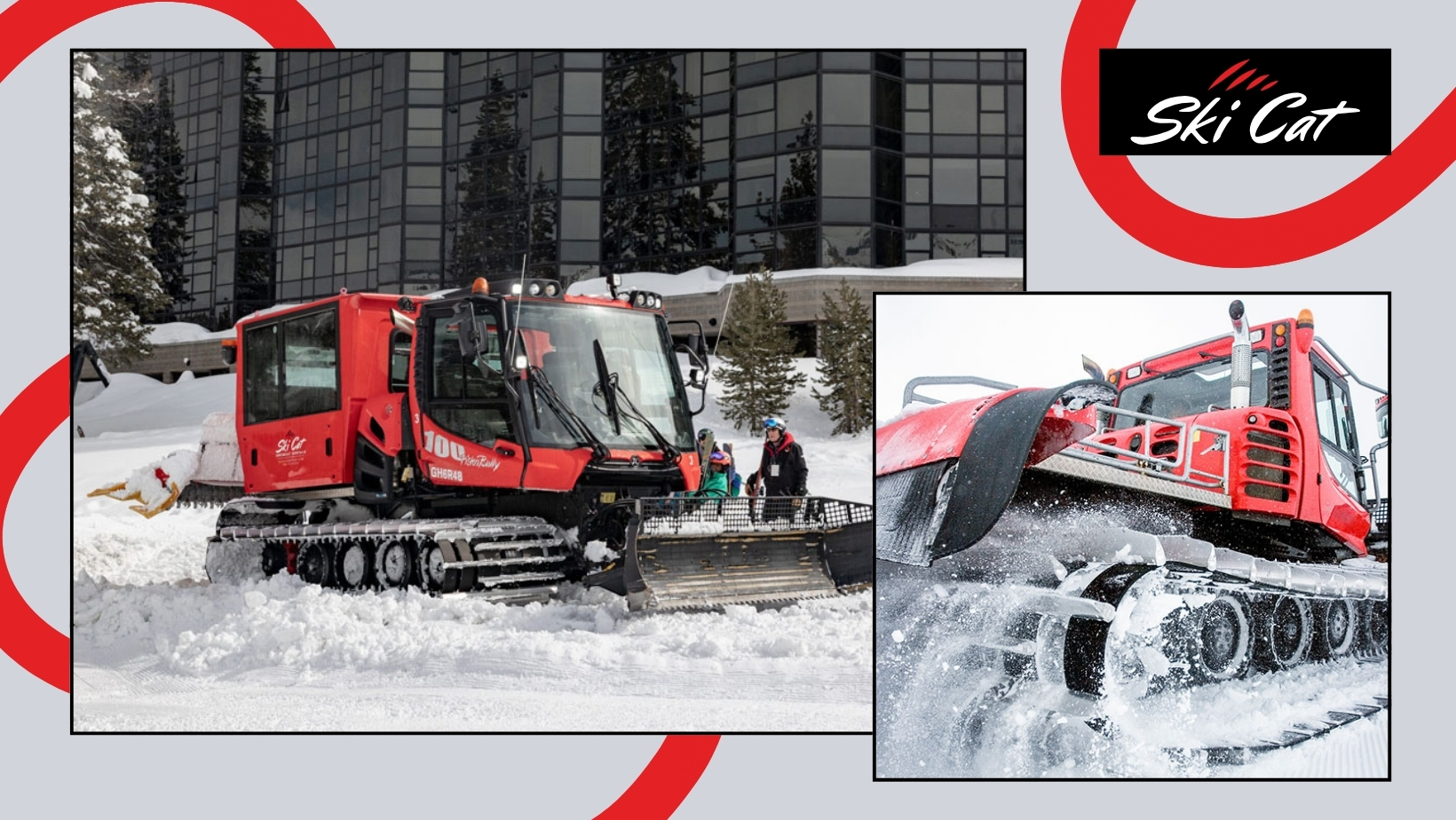Table of Contents
ToggleSnow grooming is a crucial aspect of any resort in providing the best quality experience for snowboarders and skiers. Without it, slopes can quickly get messy and even create dangerous obstacles that can cause serious injury.[1]Westlin, Nils. (1976). Factors Contributing to the Production of Skiing Injuries. Orthopedic Clinics of North America. Volume 7, Issue 1, Pages 45-49. ISSN … Continue reading As someone who works with snow and slopes, it’s important to know how to snow groom as best as possible. That’s why we decided to gather our top snow grooming tips and tricks so your slopes can be in the best shape possible.
Tips for Beginners
Groom as Often as Possible
One of the most important things you can do as a driver is to groom as often as possible. Grooming helps to compact the snow, preventing it from melting as quickly, and also helps to protect its shape. [2]Gross, R., Winiwarter, V. (2015). Commodifying snow, taming the waters. Socio-ecological niche construction in an Alpine village. Water Hist 7, 489–509.https://doi.org/10.1007/s12685-015-0123-0
The outside weather is always changing temperature, and the slopes are consistently being used, which ultimately creates bumps and holes that can stick if you don’t take care of them properly. In addition, experienced skiers and snowboarders prefer a clean slope to practice on and will avoid a messy hill when possible. [3] Falk, M., Hagsten, E. & Lin, X. (2022). Spatial influence on the distribution of downhill skiers in Sweden. Int J Biometeorol. https://doi.org/10.1007/s00484-022-02259-5. Keeping your slopes clean will keep your skiers both safe and happy.
Groom Every Snowfall
Each time it snows, the conditions of your hills can change. This is why it’s so important to groom after every snowfall, especially when there are large snowstorms. Fresh snow can easily cover dangers and other obstacles that have been buried beneath, making an ungroomed slope after snowfall potentially dangerous. Grooming with every snowfall will also make maintenance and keeping your slopes in great shape much easier because they are being consistently taken care of.
Always Be Prepared
As a beginner in snow grooming, it’s vital to be prepared for any situation. Always keep a radio, phone, or other form of contact on you at all times in case of emergency. In addition, it’s important to always keep lifesaving gear on you, as you never know when an emergency may happen. You wouldn’t want to be left out in the cold (quite literally).
Advanced Tips
Always Consider Outside Conditions
When it comes to grooming snow properly and safely, there are a variety of aspects to take into consideration before going out. Both the time of day and the temperature of the area you’re in play a big role in whether you should groom your slopes.[4]Howard, R., & Stull, R. (2014). PISTE: A Snow-Physics Model Incorporating Human Factors for Groomed Ski Slopes, Journal of Hydrometeorology, 15 (6), 2429-2445. Retrieved May 25, 2022, from … Continue reading
When grooming, you want to ensure the snow is cold enough, otherwise it can stick and make the job a lot harder than it needs to be. On the other hand, it can occasionally get too cold for grooming. When the outside temperature is extremely cold, the snow can become too solid to groom or try to manipulate. Many resorts find the best time to groom is at night when the temperature isn’t too warm or too cold.
Check the Weight of Your Machinery
The weight of your groomer, such as a Pistenbully 100, plays a more significant role in its functionality than you might realize. Expert snow drivers know that in different snow conditions, you have to alter the weight of your machinery for it to work as efficiently as possible. For example, in lighter conditions where there isn’t a great deal of snow, you want your machine to be lighter.
This means you should remove any excess weight from the machine so that it has an easier time gliding over the snow and gently moving it around. When conditions are poor and there has been a great deal of snowfall, this is when you want to add extra weight so that it’s able to push through what it needs.
Learn How to Read a Snow Report
Snow has an overall cooling effect that can affect the environment greatly in addition to the changes it can create by simply piling up. [5]Lievens, H., Demuzere, M., Marshall, H. P., Reichle, R. H., Brucker, L., Brangers, I., de Rosnay, P., Dumont, M., Girotto, M., Immerzeel, W. W., Jonas, T., Kim, E. J., Koch, I., Marty, C., Saloranta, … Continue reading Knowing how to interpret a snowfall report can be extremely advantageous to a snowcat driver. Because conditions can change so quickly, staying on top of the weather around you is crucial.
A snow report features a variety of aspects, from temperature trends to base measurements for slopes. While there’s no need to become an expert at reading a snow report immediately, knowing how to interpret one can make snow grooming a lot easier on you.
Tips by Activity
You won’t always groom every slope the same way, as it largely depends on what they will be used for and by whom. Here’s some advice on grooming snow based on activity.
How to Groom Snow for Skiing
In its most basic sense, snow grooming helps to both maintain ski slopes and shape them, while helping the snow last longer by compacting it. When it comes to shaping slopes for skiing, there are a variety of fun and intricate things you can do to create a unique course. For beginners, you can add small ramps and other details they can learn to maneuver. For more advanced skiers and slopes, you can create ski jumps, banked turns, and more.
How to Groom Snow for Snowboarding
While snowboarders and skiers often share the same slopes, it is possible to design your hills to be more snowboarder or skier friendly. If you’re looking to groom some slopes so that snowboarders can get more use out of them, there are multiple fun things you can try. Adding jumps, small obstacles, and half pipes are all ways to let snowboarders tear the slopes up in new ways. For beginner slopes with people just learning how to snowboard, flat, open slopes are preferred until they can get the hang of it.
Snow Grooming Techniques
While the way you operate your snowcat will depend heavily on the weather and snow conditions, there are a variety of different tips and techniques that can help you to do the job efficiently and effectively. For example, if a trail is badly moguled, you’ll most likely need to make multiple passes over the same trail to help rearrange and compact the snow.
Using the tiller, you can smooth the trail if the snow isn’t wet. Basic grooming also has basic techniques, such as packing. Packing snow simply means compacting it so it takes up less space and doesn’t melt as fast, but it also helps to reshape the trails that are being worked on.
Should You Get Grooming Lessons?
If you work at a ski resort or are looking to become a driver, it’s never a bad idea to get some training on the process. Snow grooming can be difficult and takes some time to perfect. After all, you’re working with large machinery and altering the environment’s shape.
Here are a few reasons why you and your employees should consider snow grooming lessons:
Lessons Increase Efficiency
One of the biggest reasons you and your employees should consider snow grooming lessons is because it can increase the efficiency of your team immensely. Knowing how to correctly use these complicated machines can not only cut the time that would be used trying to work with the vehicle, but it also helps to improve the speed at which the grooming is done.
Lessons Reduce Operating Costs
You might be wondering how getting lessons on snow grooming can lessen some of your operating costs. This is because with experienced staff working your machinery, there are fewer issues and less time spent trying to figure things out, and costs are cut by simply doing the job right the first time. Even making sure that the snowcat is the right weight can help cut down fuel costs when it’s taken care of properly.
Lessons Reduce Problems and Potential Dangers
The problem with inexperienced workers is that there is a lot of room for error – some of which can be dangerous if they are not careful. By having you and your staff take snow grooming lessons, you can help to ensure the safety of both your workers and your customers. Big machinery shouldn’t be operated by amateurs without the proper training, especially when they’re working on a ski hill.
Sources:[+]
| ↑1 | Westlin, Nils. (1976). Factors Contributing to the Production of Skiing Injuries. Orthopedic Clinics of North America. Volume 7, Issue 1, Pages 45-49. ISSN 0030-5898.https://doi.org/10.1016/S0030-5898(20)31165-2 |
|---|---|
| ↑2 | Gross, R., Winiwarter, V. (2015). Commodifying snow, taming the waters. Socio-ecological niche construction in an Alpine village. Water Hist 7, 489–509.https://doi.org/10.1007/s12685-015-0123-0 |
| ↑3 | Falk, M., Hagsten, E. & Lin, X. (2022). Spatial influence on the distribution of downhill skiers in Sweden. Int J Biometeorol. https://doi.org/10.1007/s00484-022-02259-5. |
| ↑4 | Howard, R., & Stull, R. (2014). PISTE: A Snow-Physics Model Incorporating Human Factors for Groomed Ski Slopes, Journal of Hydrometeorology, 15 (6), 2429-2445. Retrieved May 25, 2022, from https://journals.ametsoc.org/view/journals/hydr/15/6/jhm-d-14-0013_1.xml |
| ↑5 | Lievens, H., Demuzere, M., Marshall, H. P., Reichle, R. H., Brucker, L., Brangers, I., de Rosnay, P., Dumont, M., Girotto, M., Immerzeel, W. W., Jonas, T., Kim, E. J., Koch, I., Marty, C., Saloranta, T., Schöber, J., & De Lannoy, G. (2019). Snow depth variability in the Northern Hemisphere mountains observed from space. Nature communications,10(1), 4629. https://doi.org/10.1038/s41467-019-12566-y |

